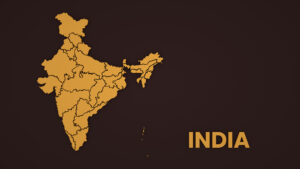We know that melting ice in the polar region, rising sea levels, and diminishing mountain glaciers are all the consequences of global warming; heat waves are also often connected to global warming. Normally, people underestimate heat waves in India, but they are specifically hazardous for vulnerable people such as the physically challenged, children, the elderly, pregnant, outdoor workers, athletes etc.
What are these Heat Waves?
Heatwave is an unusual temperature increase pertaining to specific regions that retain hot weather for at least two or more days. For the consideration of heatwaves in India, as per the India Meteorological Department, the maximum temperature of a station should cross at least 40°C in the plains, 37°C in the coastal region and 30°C in the hilly regions. In general, the criteria for declaring a heatwave is when the actual temperature or its departure from normal in a particular place or region witnessed an increase of 4.5° C to 6.4°C for a minimum of two consecutive days; and beyond 6.4°C it is called a severe heatwave.
Many people ignore the effect of heatwaves though being hazardous; they rarely catch the attention because the death rates are not immediate. BBC reported, “India witnessed a 55% increase in death tolls due to extreme heat between 2000 to 2004 and 2017 to 2021”. Now again, in 2023, the extreme heat waves are affecting several states of the nation in the summer months between March to June. However, they reached a peak in May due to intense climatic changes.
Heatwaves not only affect human health but also severely impact the environment, agriculture, livestock, water scarcity, hydropower generation, transportation and food. People exposed to heat waves may suffer from exhaustion, fatigue and heat strokes that can even take their lives. Still, Indians are negligent about the heat waves.
How does heat influence health?
Intense temperatures due to climate change can affect large populations triggering health emergencies even though the effect is for a brief period. World Health Organization states that extended periods of high day and night temperatures create incremental physiological strain on the human body, aggravating the top causes of death globally, including respiratory and cardiovascular diseases, diabetes mellitus and renal disease, especially for socio-economically vulnerable people.
Heat gain in the human body can be caused by external heat and internal body heat generated from metabolic processes. Rapid rises in heat gain due to exposure to hotter-than-average conditions compromise the body’s ability to regulate temperature. They can result in a cascade of illnesses, including heat cramps, heat exhaustion, heatstroke, and hyperthermia.
Deaths and hospitalizations from heat can occur extremely rapidly or have a lagged effect and result in accelerating death or illness in the already frail, particularly observed in the first days of heatwaves. Even small differences from seasonal average temperatures are associated with increased disease and death. Temperature extremes can also worsen chronic conditions, including cardiovascular, respiratory, and cerebrovascular disease and diabetes-related conditions.
Heat also has important indirect health effects. Heat conditions can alter human behaviour, the transmission of diseases, health service delivery, air quality, and critical social infrastructure such as energy, transport, and water. The scale and nature of the health impacts of heat depend on the timing, intensity and duration of a temperature event, the level of acclimatization, and the adaptability of the local population, infrastructure and institutions to the prevailing climate. The precise threshold at which temperature represents a hazardous condition varies by region, other factors such as humidity and wind, local levels of human acclimatization and preparedness for heat conditions.
What else gets affected by heat waves?
High temperatures have an adverse effect on agriculture. Heat waves destroy the plant growth resulting in lesser yield. Due to heat stress, livestock may experience reduced conception rates, milk production and growth.
Low humidity and high atmospheric temperatures result in water scarcity and droughts; heat waves also reduce the production and transmission of power and energy.
What are the preventive measures?
- Avoid direct exposure to heat and sunlight, specifically mid-noon and afternoon. Use sunglasses, hats and umbrellas when you get outdoors.
- Wearing light-coloured cotton clothes is recommended, and avoid working outdoors. Drink sufficient water and carry water bottles during commutation.
- Avoid hot beverages, alcohol and carbonated drinks that cause dehydration. Do not consume high-protein food.
- Please keep your pets and livestock in shades or create a cool area for them, and provide them with adequate water to drink.
- Never stay inside a vehicle for a longer time. Turn on the air conditioner if necessary.
- Consume lime juice, sugarcane juice, buttermilk or any citric fruit juices that helps to rehydrate your body.
- Consult the doctor if you feel weakness, dizziness or blurred vision. Senior citizens, people with health issues and children are more vulnerable to heat strokes.
- Employ the methods to maintain your living place cool and allow the natural air for ventilation in the nighttime.
- Actively follow the notifications passed by Indian Meteorological Department about heatwave forecasts, alerts and information through various channels and media.
- Growing plants and trees provide fresh air and help to keep your home in the shade.
People in India need more awareness of heat waves and generally ignore them. Still, it is important to pay attention to heat wave forecasts from the relevant authorities and agencies and to employ preventive measures to protect yourself, your family, your friends and your pets. Please educate others unaware of the deadly effects of heat waves.








